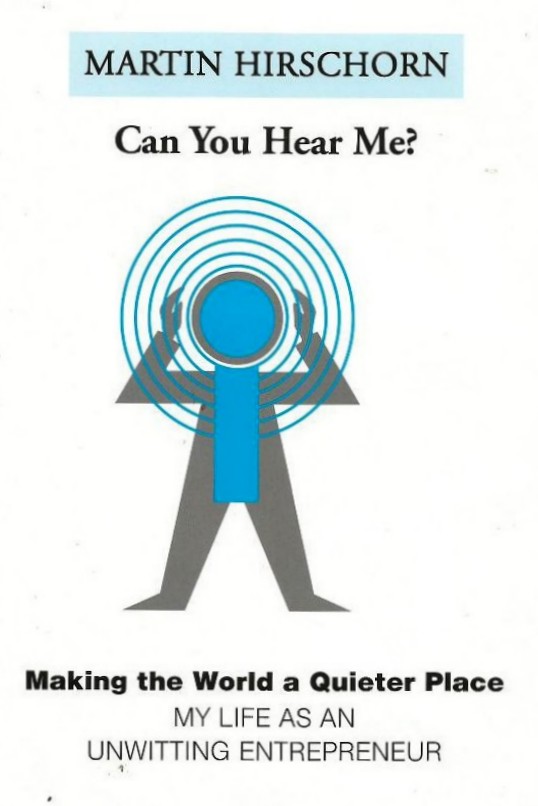At what would normally be a festive meal at a Rabbi’s home, I met a young man who was born with sight and was blind, blinded in a way that only the miracle of the development of artificial eyes could restore his sight. Much of the conversation at the table concerned music, and it was clear that the young man loved music in all its variety. But he said using CD’s was too difficult for him, and he greatly regretted the closing of the local classical music station. Use of a computer for finding streaming music on the web was also beyond his abilities. So much of the time he was simply alone, listening to the audio of TV broadcasts. I wanted to add him to my list of people to help. But after he left the table before desert was served, the Rabbi’s wife warned me not to plan on making regular visits to his small apartment alone, because he is currently schizophrenic.
Some 40 years ago, while I was a senior architectural acoustical consultant at Bolt Beranek and Newman, BBN developed something named (approximately) The Audio Analgesia. It was a device that played a mixture of soothing noise and music in a controlled manner to help dentists alleviate pain. It was a success for its particular application, but injected pain-removers have gotten safer and more effective since then, and dental work can now be relatively painless, not requiring this type of device. But good music has been proven as a therapeutic item in the psychiatric kit of tools, and I think there would be a good market for an updated version of this device. Possibly, a thousand selections should be stored in memory, play lists made up with the advice of experts on mental illness to suite the different manifestations, music available at the touch of a button, and the device re-programmable.
The idea seems reasonable to rabbis I have talked to in the days since that meal.
About the Author
David Lloyd Klepper is currently a student of Rabbinics at Yeshivat Beit Orot, Jerusalem, Israel, having moved to Israel in 1996 from his position as President of Klepper Marshall King, White Plains, NY, Acoustical Consultants, and as Adjunct Professor of Architectural Acoustics at City University, New York City. Before 1971 he was a senior consultant at Bolt Beranek and Newman, starting his consulting career there in May 1957. He received his SM and SB degrees in Electrical Engineering from MIT, and between times served as Assistant Audio-Radio Member of the PsyWar Board at Fort Bragg, NC, during the Korean conflict, leaving active duty as a 1st Lt. He provided acoustical advice for over 200 worship space buildings, including the National Presbyterian Church, Washington, DC, St. Thomas Church Fifth Avenue, New York City, the Capetown, South Africa, Anglican Cathedral, River Road Baptist Church, Richmond, Virginia, Young Israel of Southfield, Michigan, and Boston’s Holy Cross Cathedral. In this capacity, he was a pioneer in application of digital delay and electronic simulation of reverberation in worship spaces, and pew-back speech reinforcement. Publications include 40 papers in professional journals, a coauthor with Professor Kleiner and Father Rendell Torris of the book Worship Space Acoustics, JRosspub.com., and Editor of the two Sound Reinforcement Anthologies of the Audio Engineering Society. He is a fellow of both the Acoustical Society of America and the Audio Engineering Society, past Emeritus Board Certified member of the Institute of Noise Control Engineering, and a member of both the American Guild of Organists and the Organ Historical Society. He also belongs to a number of railroad and public transit interest organizations. You may contact Klepper at ddaveklepper1@gmail.com.
Editor’s Note (by Chris Foreman):
My mother suffered from severe Alzheimer’s disease some years before she actually died. On her 90th birthday, I and my siblings visited Mom for a birthday celebration. She sat at the table in the nursing home, completely unresponsive, with cake and ice cream in front of her. Before we left, we sang “Happy Birthday” to her. When the singing started, Mom perked up, smiled and sang with us. She had played piano and always loved music and, even in this advanced Alzheimer’s state, she could still sing. From this experience, I can verify that David Klepper’s concept posted here has very real healing potential.
Two related papers by David Klepper are also posted on this website:
“An Autobiographical Assessment of the Importance of the Early-to-Reverberant Sound-Energy Ratio, “Clarity,” in Speech Acoustics”, by David Klepper, may be found here.
“The Early-To-Reverberant Sound-Energy Ratio In Concert Hall Acoustics”, by David Klepper, may be found here.





